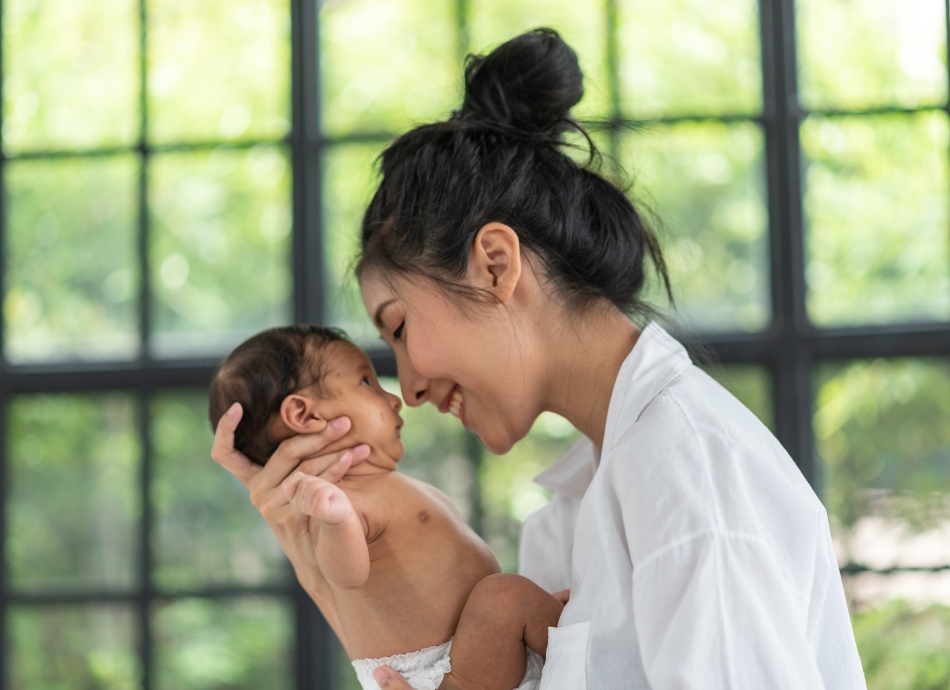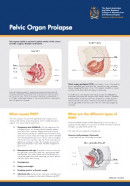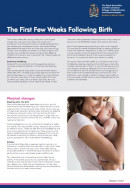A maternal birth injury is when the person giving birth experiences an injury to their body as a result of childbirth.

Image credit: Canva

We're aware of a problem when trying to use Zero Data to link to Healthify. Zero Data is managed by Health NZ and we are working with them to get this fixed.

A maternal birth injury is when the person giving birth experiences an injury to their body as a result of childbirth.

Image credit: Canva
Maternal birth injuries can have long-lasting effects so it's important you get treatment and support early on. This will help you recover faster and reduce the impact of related injuries in the future.
Your midwife, doctor, nurse, physiotherapist or other healthcare provider can lodge an Accident Compensation Corporation (ACC) claim for you after you’ve been diagnosed with an injury. This might be straight away after the birth of a baby while you’re in the hospital, or sometime after birth when it’s been identified you need further support and care for your injury.
Learn more about how a claim is put in on your behalf(external link).
A recent amendment to the Accident Compensation Act 2021 in Aotearoa New Zealand came into effect from 1 October 2022. The amendment extended the meaning of the term ‘accident’ so that it now includes “an application of a force or a resistance internal to the human body at any time from the onset of labour to the completion of delivery that results in an injury described in Schedule 3A to a person who gives birth.” Put simply, this means that if you are giving birth (or gave birth on or after 1 October 2022) and experience one or more of a set of traumatic injuries during your labour or birth, you can apply for assistance from ACC to help with your recovery.
The following list outlines the birth injuries covered by ACC, the prevalence (or how common they are) if known, and provides a brief description of each.
ACC is limited by New Zealand legislation in what it can and can’t cover as maternal birth injuries. Things ACC can’t cover as a maternal birth injury include:
If you don’t meet these criteria, either because your injury isn’t one of the ones listed, or it happened before 1 October 2022, talk to your healthcare team about what support is available.
Once your claim is accepted, you can get the support you need from ACC. This might include physiotherapy or other specialist treatment or rehabilitation, support at home, or help with other costs.
Your lead maternity carer (LMC), doctor, nurse practitioner or other healthcare provider will be able to refer you for further treatment. Once you have an accepted ACC claim you can also contact your local ACC-registered treatment provider (eg, a physiotherapist) directly to make an appointment.
A wide range of treatments and services can be paid for by ACC, eg, hospital treatment including surgery, physiotherapy, counselling, nurse services and radiology. In some cases ACC may only pay part of the cost and your treatment provider will ask you to pay the rest. Read more about what treatment can be funded by ACC(external link).
Traditional rongoā Māori healing services may be funded as a rehabilitation option if you’re injured. This is part of ACC’s kaupapa Māori health service pathway, which aims to provide culturally appropriate care to māmā, birthing parents and whānau. These services include mirimiri (bodywork), whitiwhiti korero (support and advice) and karakia (prayer). Read more about accessing rongoā Māori treatment(external link).
If you would like more information, visit the ACC website(external link) or call their customer service line (0800 101 996) between 8am and 6pm Monday to Friday.
After a pregnancy and birth your body will need time to recover. There are many things which can happen, although not every new mother experiences them.
Normal reactions
Although these things are to be expected after having your pēpi, if any of them continue after the first few weeks, talk to your healthcare provider or LMC. They will be able to check that everything is normal and provide you with treatment or support if needed.
It will take your body a while to recover from the pregnancy and birth process but if you have ongoing pain, swelling or bleeding it might mean something is wrong. Listen to your body and if something doesn’t feel right, talk to your healthcare provider.
Things to look out for are:
If you experience any of these, contact your healthcare provider for advice and support.
As well as the support provided through ACC, there are organisations and groups providing support for people who have experienced birth-related trauma. The sites below provide some options:
Birth Trauma in New Zealand(external link)
Perinatal Anxiety & Depression Aotearoa(external link)
Australasian BirthTrauma Association(external link)
Mental health and wellbeing apps for pregnancy and postpartum depression
Pregnancy, baby care and parenting apps
Pain management apps
Getting help after a birth injury(external link) ACC, NZ
Pelvic organ prolapse(external link) RANZCOG, Australia and NZ
The first few weeks following birth(external link) RANZCOG, Australia and NZ
Davidson M. Maternal birth injuries(external link) NZ Doctor, 2023
Cover for maternal birth injuries(external link) ACC, NZ, 2022
Pubic rami fracture(external link) NHS Foundation, UK
Birth injury (to the mother)(external link) Pregnancy, Birth & Baby, Australian Govt
What’s normal and what’s not after giving birth(external link) ACC, NZ, 2023

Pelvic organ prolapse
RANZCOG, Australia and NZ

The first few weeks following birth
RANZCOG, Australia and NZ
Credits: Healthify editorial team. Healthify is brought to you by Health Navigator Charitable Trust.
Reviewed by: ACC maternal birth injury team.
Last reviewed: